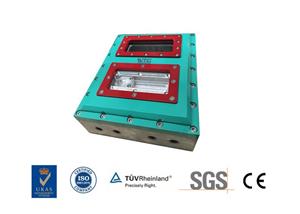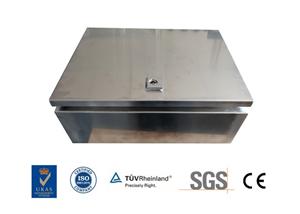Installation and turning method of eccentric parts
Turning eccentric workpiece with four-jaw single-action chuck
Eccentric workpieces with small quantity, short length and complex shapes can be turned on a four-jaw chuck.
2. Turning eccentric workpiece with three-jaw self-centering chuck
This method is suitable for processing eccentric workpieces with large quantity, short length, small eccentricity and low precision requirements. When clamping the workpiece, a gasket should be added to one of the three-jaw self-centering chuck.
3. Turning eccentric workpiece with double chuck
This method is suitable for processing eccentric workpieces with short length, small eccentricity and large quantity. Before processing, the eccentricity should be adjusted. The pipe threading lathe first uses a machined mandrel to be clamped on the three-jaw self-centering chuck for well correction; the pipe threading lathe then adjusts the four-jaw single-action chuck to offset the center of the mandrel by the eccentricity of the workpiece ; The pipe thread lathe can clamp the workpiece for processing after removing the mandrel. The advantage of this method of pipe threading lathe is that the eccentricity needs to be corrected only once in a batch of workpieces. The disadvantage is that the two chucks overlap and the rigidity is poor.
4. Turning eccentric workpieces with a faceplate
This method is suitable for machining eccentric hole workpieces with short length, large eccentricity and low precision requirements.
Before machining the eccentric hole, first process the outer circle and both ends of the workpiece to the requirements, draw the position of the eccentric hole on the end surface, and then use the pressure plate to evenly clamp the workpiece on the flower plate, and use the needle plate to calibrate and press It can be turned tightly.
5. Turning eccentric workpiece with eccentric chuck
This method is suitable for processing more precise partial L-I parts such as short shafts, discs and sleeves. The pipe thread lathe has the advantages of convenient clamping, guaranteed processing quality, high precision and strong versatility.
6. Turning eccentric workpieces with two centers
This method is suitable for processing long eccentric workpieces. Before machining, the main center hole of the center point and the center hole of the eccentric point should be drawn at the two ends of the workpiece, and the center hole should be machined by the pipe thread lathe, and then the front and back centers can be used to hold it for turning.
If the eccentricity of the eccentric shaft is small, it may interfere with the main center hole when drilling the eccentric center hole. At this time, the process table can be increased, that is, the length of the workpiece is extended to the depth of the two center holes. When processing pipe thread lathes, you can turn the blank into an optical axis first, then turn the center holes at both ends to the length of the workpiece, then draw the eccentric center hole line, drill the eccentric center hole, and turn the eccentric shaft.
7. Turning eccentric workpiece with special fixture
This method is suitable for eccentric workpieces with high machining accuracy requirements and large batches.
Before machining, the corresponding eccentric shaft or eccentric sleeve should be processed according to the eccentricity of the workpiece, and then the workpiece should be centered on the eccentric sleeve or eccentric shaft for turning.




